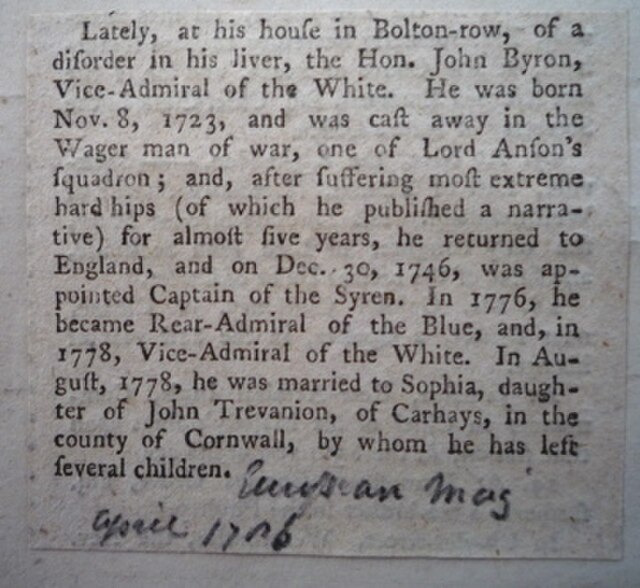Vice-Admiral John Byron was a British Royal Navy officer and explorer. He earned the nickname "Foul-Weather Jack" in the press because of his frequent encounters with bad weather at sea. As a midshipman, he sailed in the squadron under George Anson on his voyage around the world, though Byron's ship, HMS Wager, made it only to southern Chile, where it was wrecked. He returned to England with the captain of the ship. He was governor of Newfoundland following Hugh Palliser, who left in 1768. He circumnavigated the world as a commodore with his own squadron in 1764–1766. He fought in battles in the Seven Years' War and the American Revolution. He rose to Vice Admiral of the White before his death in 1786.
Captain the Honourable John Byron, Joshua Reynolds, 1759
Wreck of the Wager
The mythical Pepys Island, which Byron searched for in 1764–1765. Illustration by William Hacke, 1699.
John Byron Death Notice
HMS Wager was a square-rigged sixth-rate Royal Navy ship of 28 guns. It was built as an East Indiaman in about 1734 and made two voyages to India for the East India Company before the Royal Navy purchased her in 1739. It formed part of a squadron under Commodore George Anson and was wrecked on the south coast of Chile on May 14th 1741. The wreck of Wager became famous for the subsequent adventures of the survivors who found themselves marooned on the desolate Wager Island in the middle of a Patagonian winter, and in particular because of the Wager Mutiny that followed.
"The Wreck of the Wager", the frontispiece from John Byron's account




